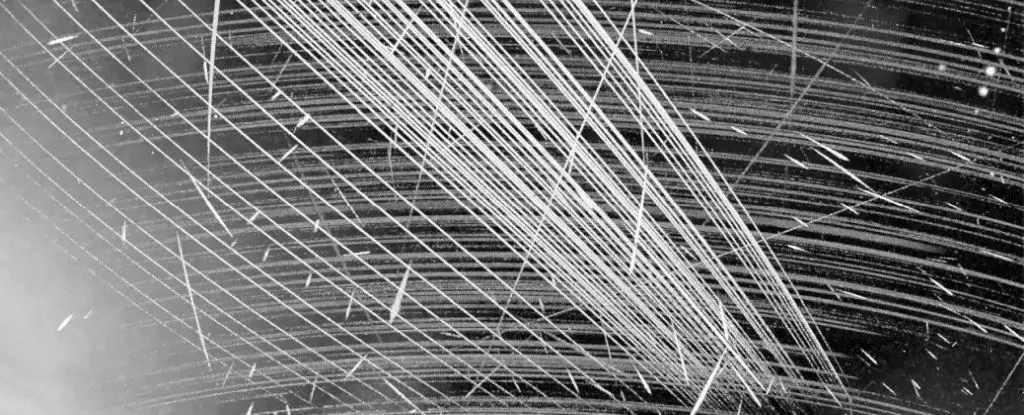As humanity ventures further into the cosmos, a technological revolution has taken flight in the form of satellite swarms. These satellites, particularly the second generation of Starlink units, are dramatically reshaping our celestial vista, but not without significant consequences. The upgraded v2mini and v2mini Direct-to-Cell satellites are reportedly emitting up to 32 times more radiation than their first-generation counterparts. This increase poses a serious threat to vital radio bands crucial for astronomical observations.
Every week, SpaceX launches approximately 40 of these satellites, which adds to an already crowded orbit. At the time of reporting, there are around 6,398 individual satellites orbiting the Earth. This proliferation raises serious concerns not only about visible light pollution but also about the leakage of radio waves that can hinder scientific research related to radio astronomy.
The radiation problem is particularly concerning because certain wavelengths are designated for radio astronomy. These radio frequencies are not merely technical specifications; they encompass the very fabric of cosmic research. Astronomers like Cees Bassa from the Netherlands Institute for Radio Astronomy (ASTRON) highlight that the emissions from these satellites are dramatically outshining some of the faintest astrophysical signals. To illustrate, the unintended electromagnetic radiation from Starlink satellites is reported to be up to 10 million times brighter than these delicate cosmic sources. This comparison can be as startling as juxtaposing faint stars visible to the naked eye with the brightness of a full moon.
The implications of this radiation leakage extend beyond mere inconvenience. As various companies rush to deploy their satellite constellations, including OneWeb, Amazon, and China’s Spacesail Constellation, the potential for increased interference looms larger. The situation can create an astronomical blackout, where the activities of satellites obscure critical cosmic signals that scientists depend on for research.
Currently, the realm of satellite emissions is largely unregulated. The absence of stringent guidelines on electromagnetic radiation emissions from constellation satellites poses a significant risk. Researchers stress the urgent need for regulations that address this issue proactively, rather than reactively. The more satellites that are placed into low-Earth orbit, the brighter these emissions will become, ultimately drowning out the faint whispers of the universe.
Calls for accountability also extend to the companies involved in this space race. The onus lies not only with regulators but also with the satellite companies to leverage their technological advancements for mitigating unintended emissions. Starlink, in particular, has a unique opportunity to lead by example and establish best practices in minimizing electromagnetic interference.
The implications of harming radio astronomy are profound, affecting more than just celestial observations. The technologies developed for exploring the universe have historically trickled down into everyday applications, including medical imaging, GPS, and even Wi-Fi. Compromising radio astronomy could stifle innovation and foresight in technology that benefits humanity at large.
Astronomers and engineers like Jessica Dempsey and Federico Di Vruno emphasize the need for collaboration between regulators and satellite operators. Their message is clear: there must be a mutual commitment to ensure that the heavens remain a productive workspace for scientific exploration. Failure to address these issues may lead to unforeseen consequences that could reverberate through generations.
The transformative wave of satellite technology presents a dual-edged sword. While it promises unprecedented advancements in communication and global connectivity, it simultaneously threatens the integrity of radio astronomy, essential for unpacking the mysteries of the universe. As we stand at this critical juncture, it is imperative that regulatory frameworks evolve to accommodate the changing landscape of space technology. The need for collaboration between the satellite industry and the scientific community has never been more pressing.
Taking proactive measures today can help safeguard our cosmic view for future generations, ensuring that our understanding of the universe remains as unblemished as the skies above. The time to act is now before these unseen forces become insurmountable obstacles in our quest to explore the cosmos. The balance between technological advancement and the preservation of our celestial heritage is a challenge we cannot afford to ignore.


Leave a Reply